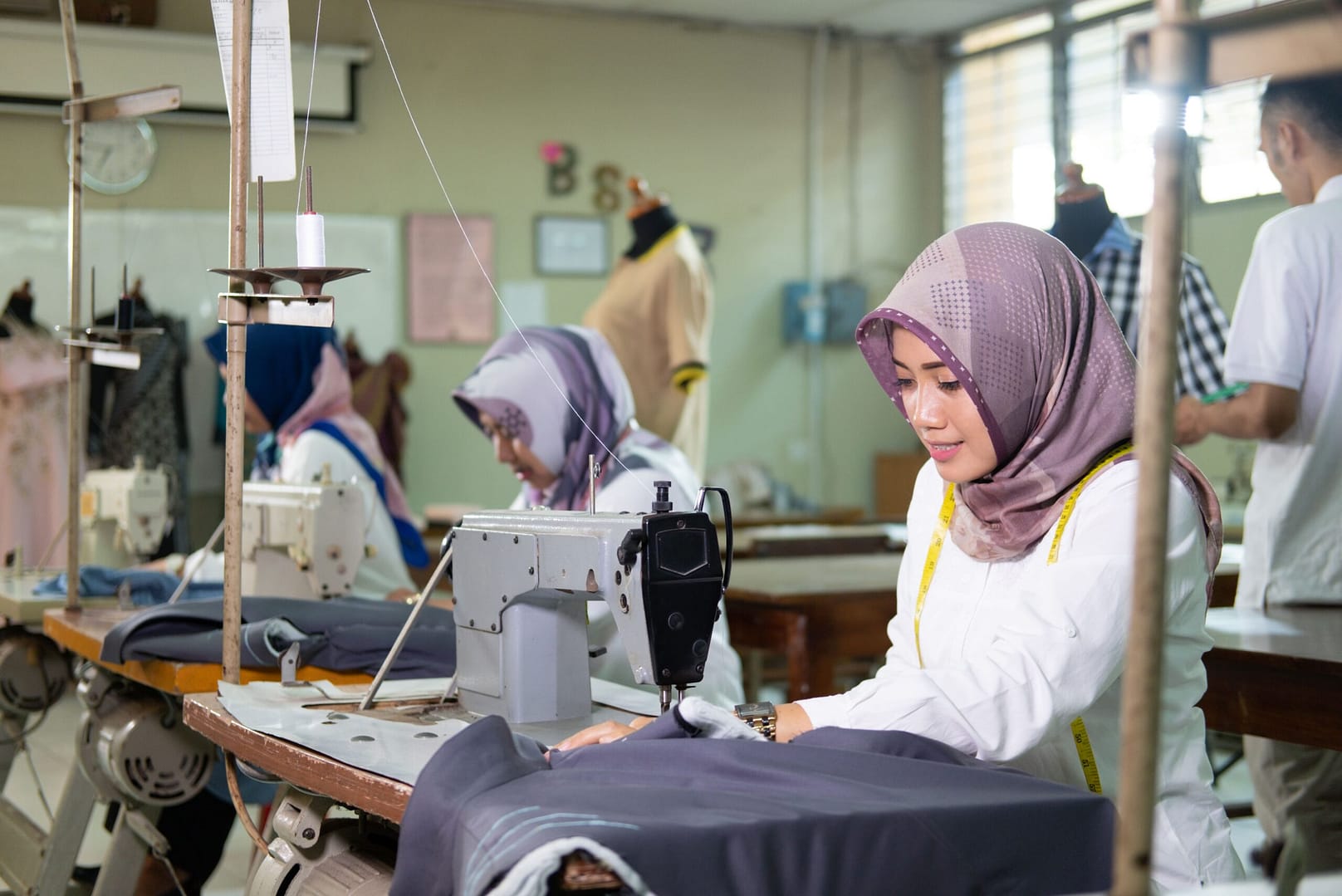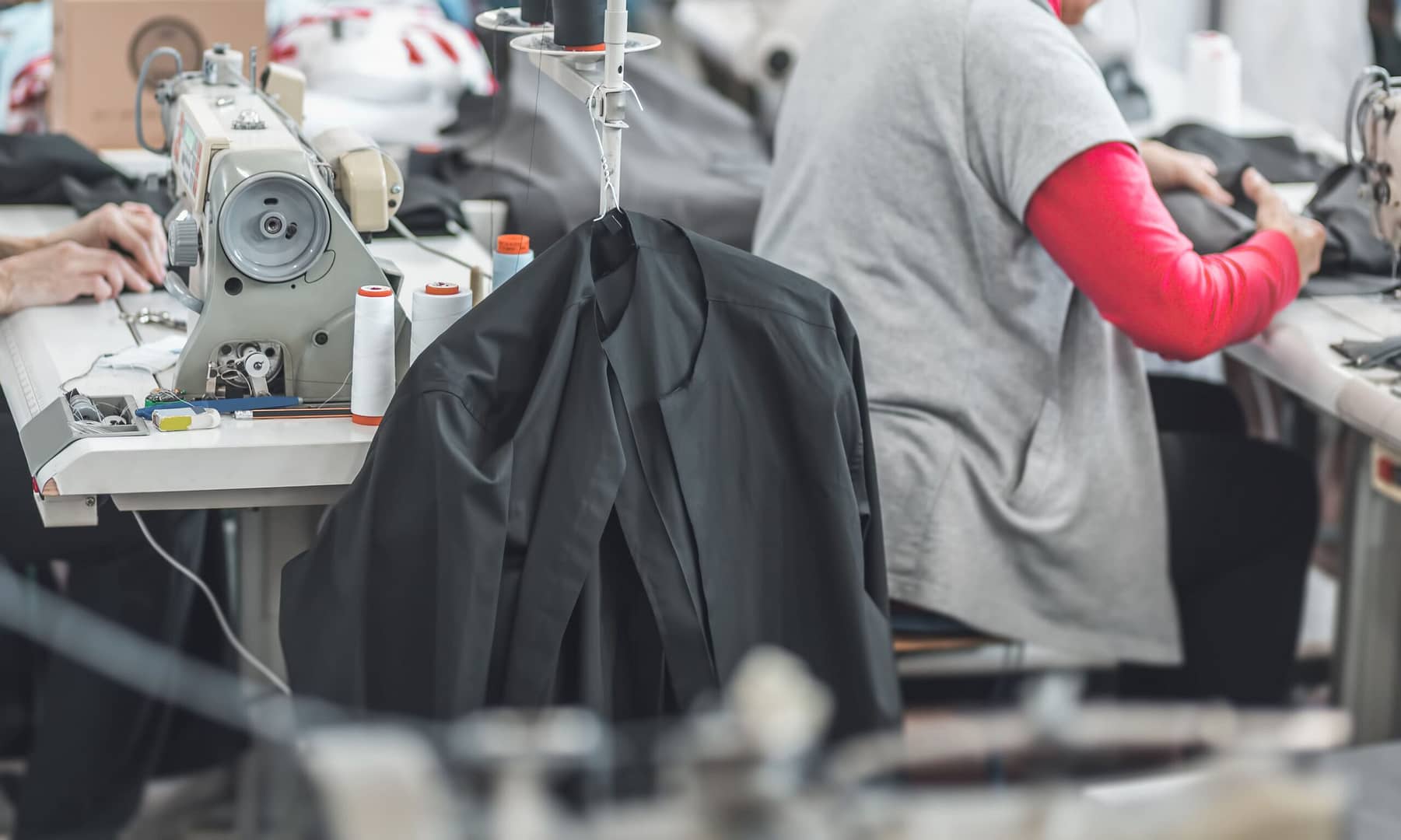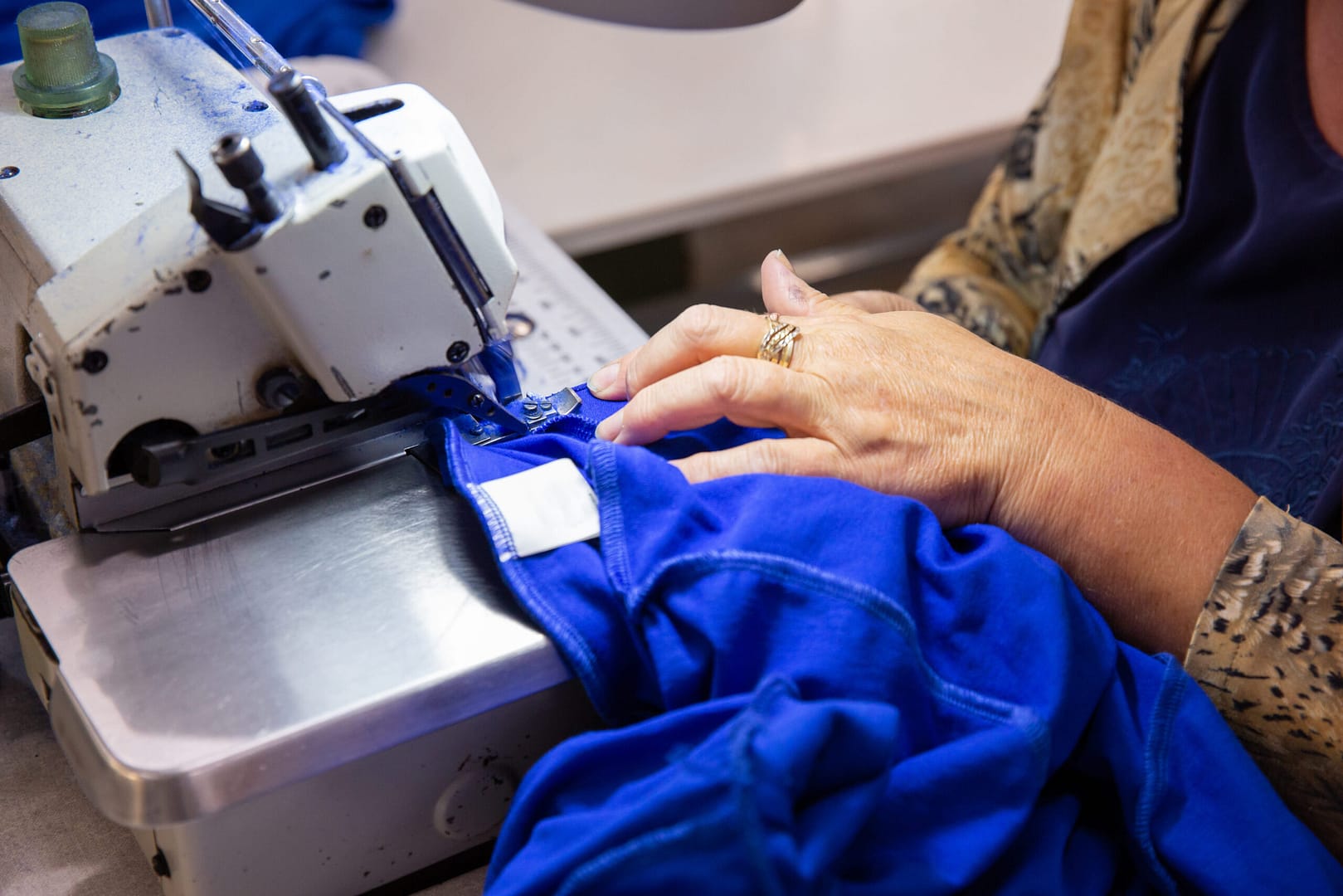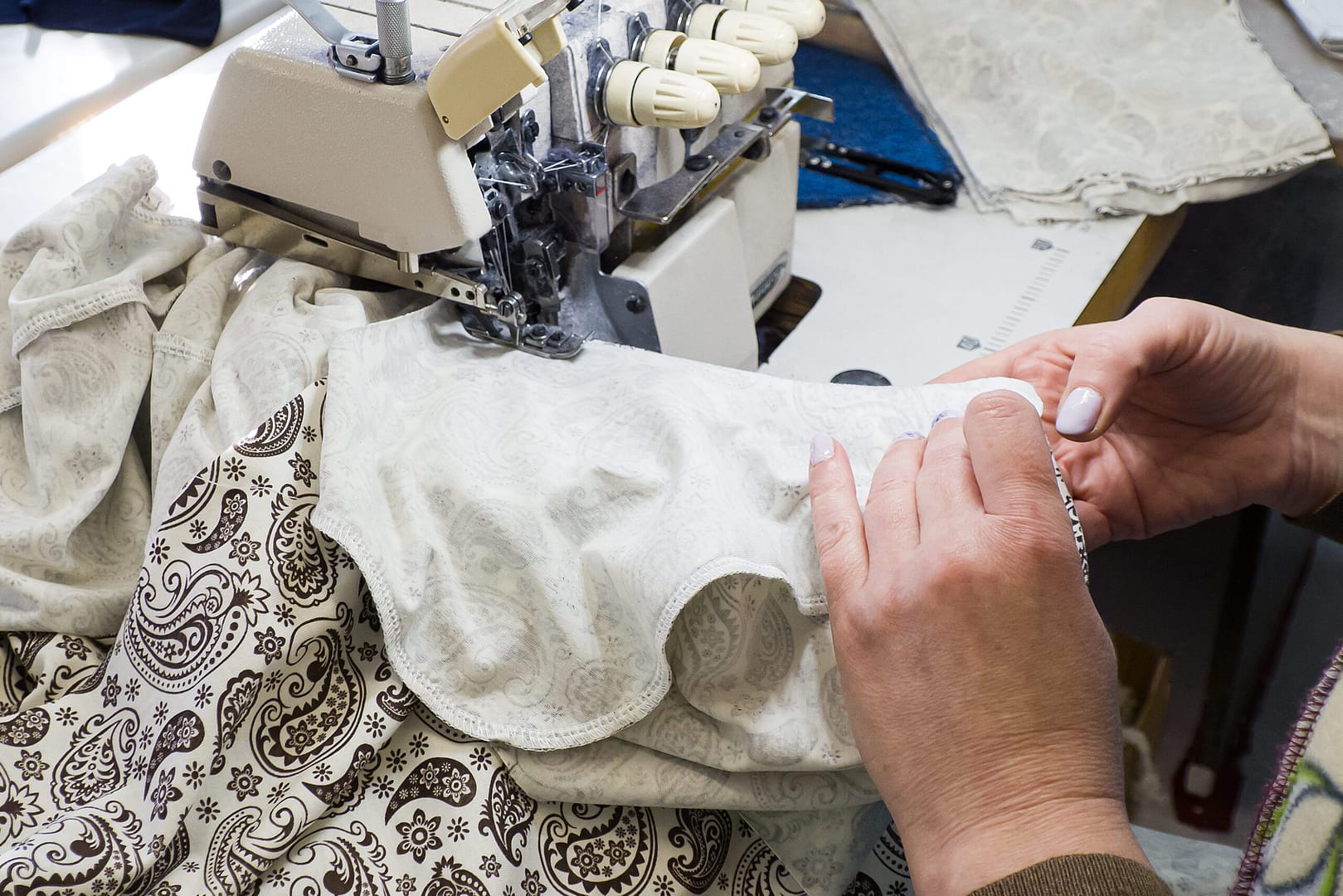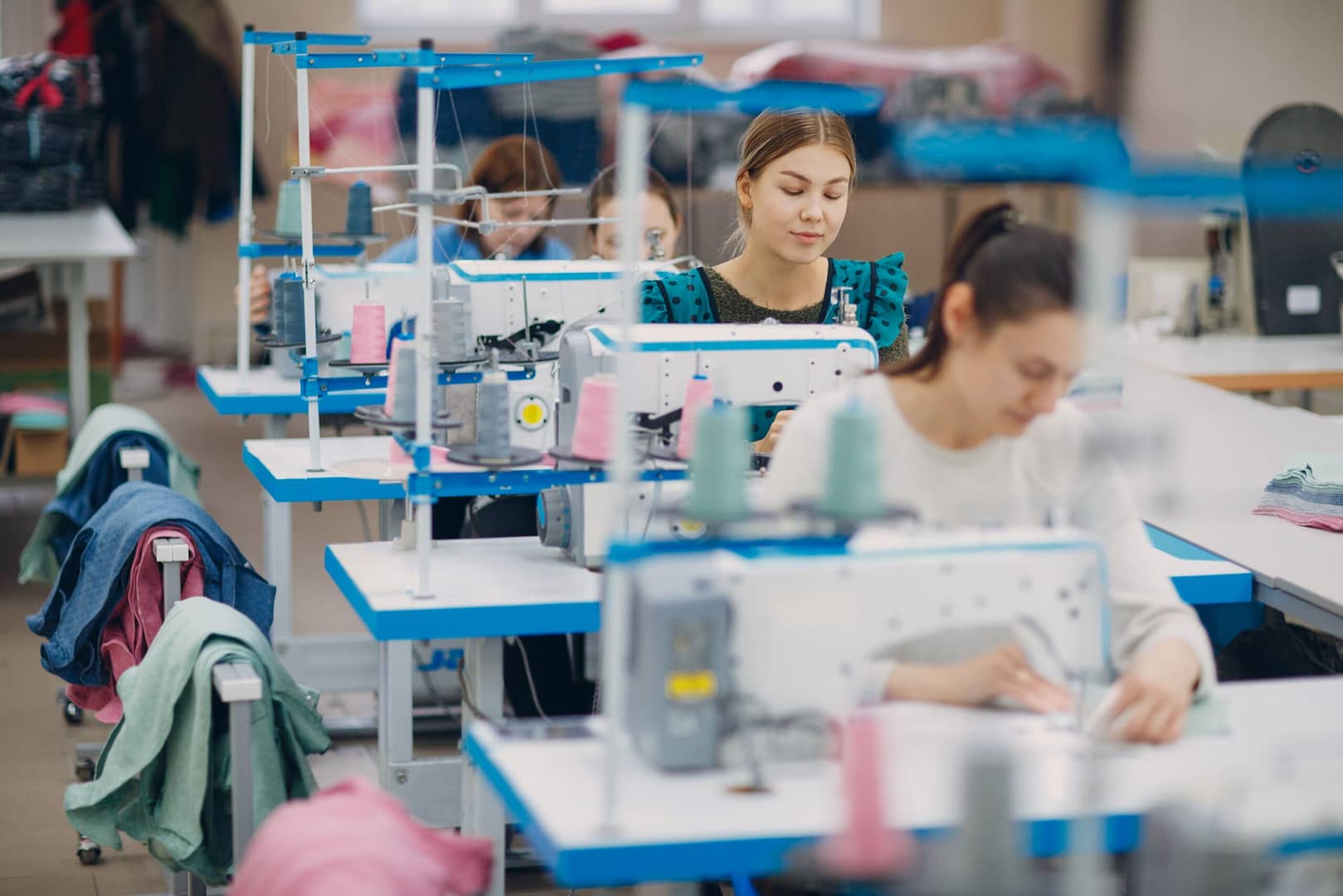| Fabric Name | Polyester |
| Fabric also known as | Polyethylene terephthalate (PET) |
| Fabric Composition | Synthetic fibers derived from petroleum products |
| Fabric Breathability | Low to moderate |
| Moisture-wicking Abilities | High |
| Heat Retention Abilities | Moderate to high |
| Stretchability (Give) | Low (unless blended with elastane or other stretch fibers) |
| Prone to Pilling/Bubbling | Moderate |
| Country Where Fabric Was First Produced | United States |
| Biggest Exporting/Producing Country Today | China |
| Recommended Washing Temperatures | Cold, warm |
| Commonly Used In | Sportswear, outerwear, home textiles, and fashion apparel |
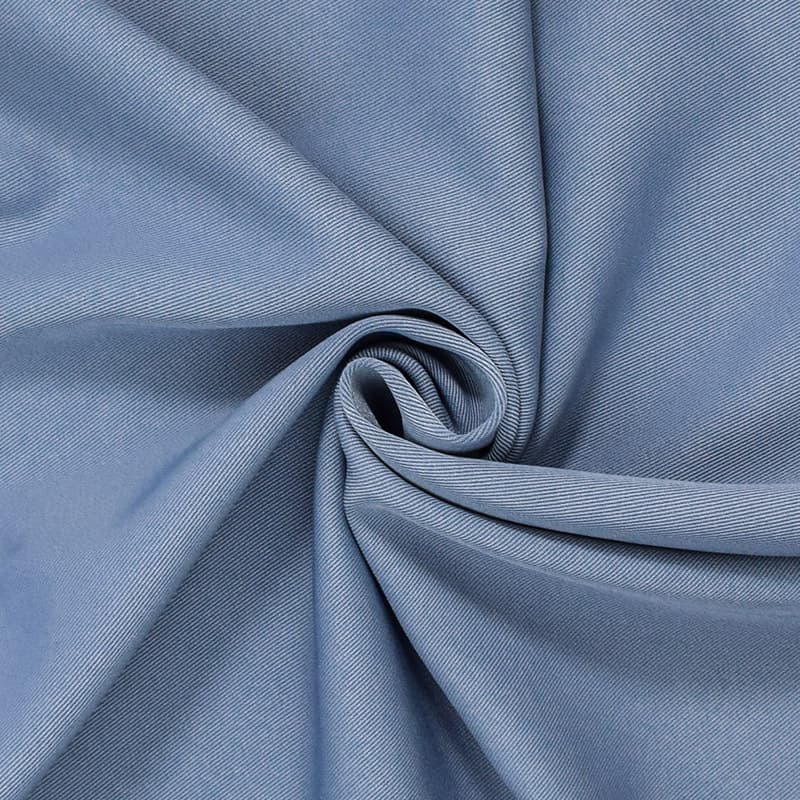
What is Polyester Fabric?
Polyester is a synthetic fabric, predominantly derived from petroleum. As one of the world’s most prevalent textiles, it is used in thousands of consumer and industrial applications. Chemically, polyester is a polymer primarily composed of compounds within the ester functional group. While it is commonly made from ethylene—a component of petroleum—ethanol can also be sourced from other origins. Although some forms of polyester are biodegradable, the majority are not, and the production and utilization of polyester contribute significantly to global pollution.
Polyester is often used solely in some garment applications, but it is more commonly blended with cotton or other natural fibers to reduce costs and affect comfort levels. When blended with cotton, polyester can enhance the shrinkage, durability, and wrinkle resistance of this widely used natural fiber. Polyester’s robust resistance to environmental conditions makes it highly suitable for long-term outdoor use.
History of Polyester Fabric
Polyester was first synthesized by British chemist W.H. Carothers in 1926. Throughout the 1930s and 1940s, British scientists made substantial advancements in the development of ethylene fabrics, efforts that eventually captured the interest of American investors and innovators. Initially developed for mass consumer use by DuPont, which also pioneered other popular synthetic fibers like nylon, polyester fiber became increasingly important during World War II when the Allied forces experienced a heightened demand for fibers for parachutes and other war supplies. After the war, DuPont and other American companies found new consumer markets for their synthetic materials against the backdrop of post-war economic prosperity.
Originally, consumers were drawn to polyester fibers for their durability over natural fibers—a characteristic that remains valued. However, in recent decades, the synthetic fiber’s detrimental environmental impacts have become more apparent, significantly changing consumer attitudes towards polyester. Despite these concerns, polyester remains one of the most extensively produced fabrics worldwide, and it is challenging to find garments that do not contain at least some proportion of polyester fibers. Notably, garments containing polyester fibers can melt under extreme heat, unlike most natural fibers, which char. This melting can cause irreversible damage to the body.
Different Types of Polyester Fabrics
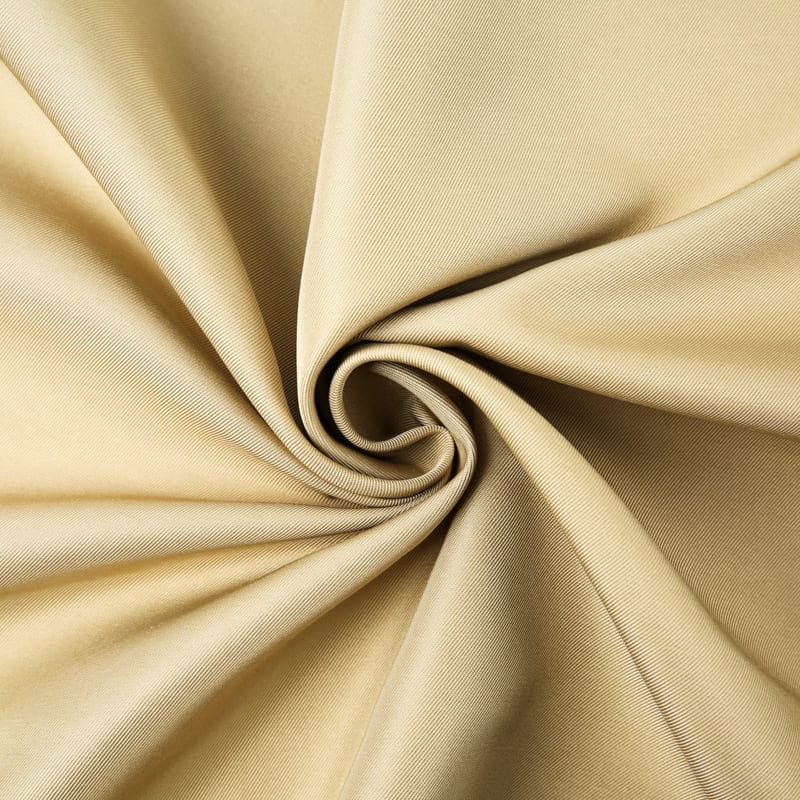
Polyester is not a one-size-fits-all material; it comes in various forms, each suited to different applications. Understanding the types of polyester can help manufacturers and designers choose the right material for their products.
Virgin Polyester: This is polyester in its purest form, made directly from raw petrochemicals. It is commonly used for apparel and home textiles due to its strong and durable nature.
Recycled Polyester: Made from recycled plastic bottles and polyester fabrics, recycled polyester has gained popularity as a sustainable alternative to virgin polyester. It offers the same functional properties but with a significantly reduced environmental footprint.
Polyethylene Terephthalate (PET): Mostly known for its use in the packaging industry (e.g., plastic bottles), PET is also woven into fabrics. It’s durable and highly resistant to microorganisms and UV damage.
Polybutylene Terephthalate (PCDT): Although similar to PET, PCDT is more elastic and resilient, making it ideal for heavier applications like draperies and furnishings.
Blends: Polyester is often blended with natural fibers such as cotton or wool to enhance comfort, feel, and breathability. These blends are particularly popular in the production of outdoor and performance wear due to their combined properties of moisture resistance and thermal insulation.
How is Polyester Made?
The production process of polyester fabrics involves several key steps, from synthesizing the raw materials to creating the final yarn. Here’s a detailed look at each stage:
Synthesis of Monomers: Polyester is primarily made from petroleum-based products. The process starts with synthesizing the monomers, which are the building blocks of polyester. The main monomers used in polyester production are purified terephthalic acid (PTA) or dimethyl terephthalate (DMT) and ethylene glycol (EG).
Polymerization: The next step is polymerization, where the monomers PTA and EG are combined in a chemical reaction to form the polymer polyethylene terephthalate (PET). This reaction typically occurs at high temperatures in a vacuum or controlled atmosphere and requires catalysts to proceed efficiently.
Melting and Extruding: Once the polymer chips are created, they are melted down. The molten polyester is then extruded through a spinneret, a device similar to a showerhead with many small holes, to form long fibers. This process is known as spinning.
Drawing: The fibers are then cooled and solidified. After cooling, they are drawn or stretched to align the individual polymer molecules, which increases the tensile strength and durability of the fibers. This drawing process can be done multiple times to achieve the desired fiber thickness and strength.
Texturing: Texturing is the next step, which provides the polyester yarn with bulk and texture that mimic the feel of natural fibers. This can be done through various techniques like air-jet texturing, where yarns are textured by interlacing them with air streams, or false-twist texturing, where the yarns are twisted, heat set, and then untwisted.
Heat Setting: Finally, the polyester fibers undergo a heat setting process. This step stabilizes the fibers’ dimensions and reduces shrinkage by applying dry heat, which allows the fibers to retain their twisted or textured configuration even after use and laundering.
Finishing: After the fibers are fully formed, they can be finished with various chemical treatments to enhance properties such as resistance to stains, water, or fire. Dyeing and other finishing processes can also be applied depending on the desired end use of the fabric.
These steps collectively form the production cycle of polyester fabric, transforming basic raw materials into a versatile and widely used textile product.
Uses of Polyester Fabric
Clothing
- Sportswear: Due to its moisture-wicking properties, polyester is extensively used in sportswear. It helps keep athletes dry by moving sweat away from the body to the surface of the fabric, where it can evaporate quickly.
- Outerwear: Polyester’s durability and resistance to wind and water make it ideal for jackets, coats, and other types of outdoor apparel.
- Fashion Apparel: Its ability to retain dye well and resist wrinkles and shrinking makes polyester a popular choice for dresses, suits, and other fashion garments.
Home Furnishings
- Curtains and Upholstery: Polyester is often used in home décor for items like curtains, drapes, upholstery fabrics, and beddings because of its strength, resistance to stretching and shrinking, and ease of maintenance.
- Carpets and Rugs: Its durable nature makes it suitable for carpets and rugs that require wear resistance and longevity.
Advantages of Polyester Fabric
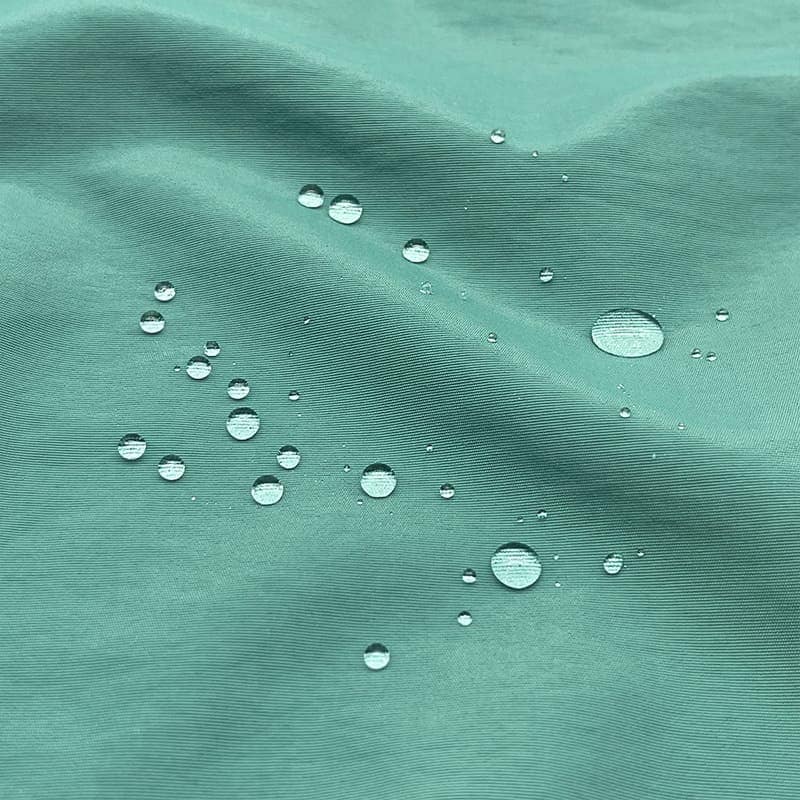
- Durability: Polyester is exceptionally strong and durable, which makes it long-lasting and resistant to most chemicals, stretching, shrinking, and abrasion.
- Moisture-Wicking: Polyester has excellent wicking properties, which draw moisture away from the body to the exterior of the fabric where it can evaporate quickly. This makes it ideal for sportswear and activewear.
- Wrinkle and Crease Resistance: Unlike natural fibers, polyester does not wrinkle easily and maintains its shape well, which is beneficial for clothing and other applications where a neat appearance is desirable.
- Easy Care: Polyester is machine washable and dries quickly. It does not need to be ironed, which makes it convenient for everyday use.
- Mildew Resistance: It resists mildew and does not rot, making it suitable for both indoor and outdoor use in damp environments.
- Versatility: Polyester fibers can be woven or knitted into fabrics of varying densities and used in a mixture of textures and finishes, allowing for extensive design flexibility.
- Cost-Effective: Polyester is generally less expensive to produce than natural fibers, making polyester fabrics affordable for many different markets.
Disadvantages of Polyester Fabric
- Environmental Impact: Polyester is a petroleum-based product, and its production involves significant energy consumption and pollution, contributing to environmental degradation. Polyester is not biodegradable, leading to long-term waste issues.
- Breathability: Polyester fabrics are not as breathable as natural fabrics, which can make them feel hot and uncomfortable in warm weather. This can be particularly disadvantageous for use in high-end fashion and comfort-focused clothing.
- Static and Pilling: Polyester fabric can create static electricity and may pill on the surface after repeated use and washing, which affects the fabric’s aesthetic and tactile qualities.
- Oil Stains: Polyester tends to absorb oil-based stains more readily than other fabrics, which can be difficult to remove.
- Sensitivity to Heat: Polyester melts at high temperatures. Therefore, care must be taken when ironing or pressing polyester fabrics to avoid scorching or melting the fibers.
- Non-Biodegradable: Most forms of polyester are not biodegradable; once disposed of in a landfill, they will not decompose, contributing to the global waste problem.
Environmental Impact
While polyester brings many benefits, it also poses significant environmental challenges:
Resource Intensity: Polyester production is energy-intensive, relying heavily on fossil fuels, which contributes to its carbon footprint.
Pollution: Polyester production involves chemicals that can be hazardous if not managed properly, leading to pollution and health risks.
Waste and Biodegradability: Traditional polyester is not biodegradable, and its widespread use has contributed to microplastic pollution, particularly in the oceans. Polyester garments shed fibers with each wash, which eventually make their way into marine ecosystems.
Recycling Initiatives: In response to these environmental challenges, there has been a push towards using recycled polyester, which significantly reduces the reliance on virgin resources and helps divert plastic from landfills and oceans. Innovations in chemical recycling also aim to create a more circular life cycle for polyester fabrics.
Polyester Fabric and Sustainability
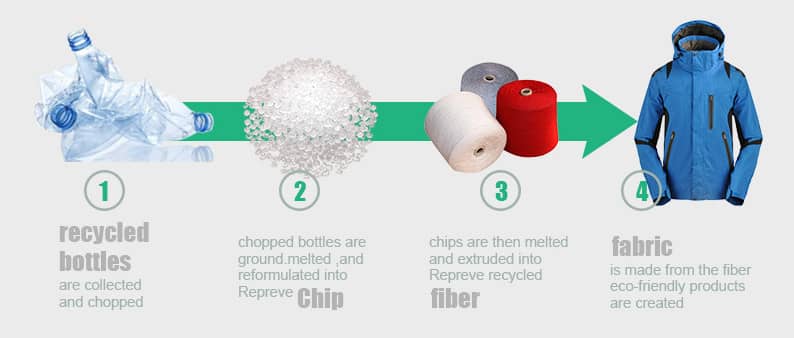
Addressing the environmental challenges of polyester production and use is critical. Efforts to improve the sustainability of polyester include:
- Recycling Polyester Fabric: Initiatives to recycle post-consumer and post-industrial polyester are growing, aiming to reduce waste and create a circular economy for textiles.
- Developing Bio-Based Polyester Alternatives: Research into bio-based alternatives to traditional polyester aims to reduce the dependency on fossil fuels and lower the carbon footprint of fabric production.
- Promoting Sustainable Practices: The fashion industry is increasingly embracing sustainable practices, including the use of recycled polyester, to mitigate environmental impacts.
These efforts represent steps towards a more sustainable future for polyester fabric, balancing its practical benefits with environmental responsibility.
How much does polyester fabric cost?
The cost of polyester fabric varies based on the type and quality, with a general range observed in the market. As of mid-2024, the price for Polyester Filament Yarn (PFY) in China is approximately $0.993 per kilogram for Drawn Textured Yarn (DTY) and around $1.143 per kilogram for Partially Oriented Yarn (POY). For Polyester Staple Fiber (PSF), prices in Northeast Asia were found to be between $9.30 and $9.40 per kilogram.
These prices reflect the market’s response to supply and demand dynamics, with adjustments frequently occurring due to factors like inventory levels at factories and anticipated demand from downstream markets. The pricing trends can fluctuate slightly in the short term, influenced by market conditions and production costs (ccfgroup) (B2B Marketplace).
Conclusion
The polyester fabric holds a pivotal role in the global textile market due to its versatility, cost-effectiveness, and range of applications from everyday wear to high-performance garments. While it presents environmental challenges, ongoing innovations in recycling and sustainable production are making polyester a more viable option for the future. For further insights into sustainable practices and innovative textile solutions, visit Valtin Apparel’s website.
FAQs on Polyester Fabric
1. Is polyester a good quality fabric?
Polyester is considered a good quality fabric in terms of durability and maintenance. It resists shrinking, wrinkling, and fading. However, its quality can vary based on how it is manufactured and processed.
2. What type of fabric is polyester?
Polyester is a synthetic fabric derived from petroleum. It is a type of polymer, which means it is made up of long chains of repeating molecular units, making it very durable and resistant to many chemicals.
3. Which is better, cotton or polyester?
The choice between cotton and polyester depends on the use case. Cotton is preferred for comfort and breathability, making it ideal for warm climates and sensitive skin. Polyester, however, is more durable, dries quickly, and is less prone to wrinkling and shrinking, making it suitable for sportswear and outdoor clothing.
4. What does polyester feel like?
Polyester fabric varies in feel depending on the specific weave and finish but generally has a smooth, light texture. It can be engineered to mimic the feel of silk, linen, or cotton.
5. What are the cons of polyester?
The main drawbacks of polyester include its tendency to retain odors, its less breathable nature which can be uncomfortable in hot weather, and its environmental impact due to its petroleum-based origins and non-biodegradable properties.
6. Is polyester good for summer?
Polyester might not be the best choice for summer clothing as it is less breathable than natural fibers like cotton. However, modern weaving techniques and finishes can improve its suitability for warm weather.
7. Does polyester shrink?
Polyester is resistant to shrinking compared to natural fibers like cotton or wool. It maintains its shape well even after multiple washings.
8. Is polyester breathable or not?
Traditional polyester is not as breathable as natural fabrics, which can make it feel less comfortable in warm conditions. However, newer forms of polyester are engineered to be more breathable, making them more suitable for active wear and warm climates.
9. Does 100% polyester stretch?
Pure polyester fabric does not stretch naturally like elastane or spandex; however, it can be blended with stretch fibers or mechanically processed to enhance its elasticity.
10. Is polyester itchy or soft?
Polyester’s texture varies greatly; it can be made soft and comfortable depending on its structure and finish. Generally, it is not itchy unless poorly woven or finished with harsh chemicals.

